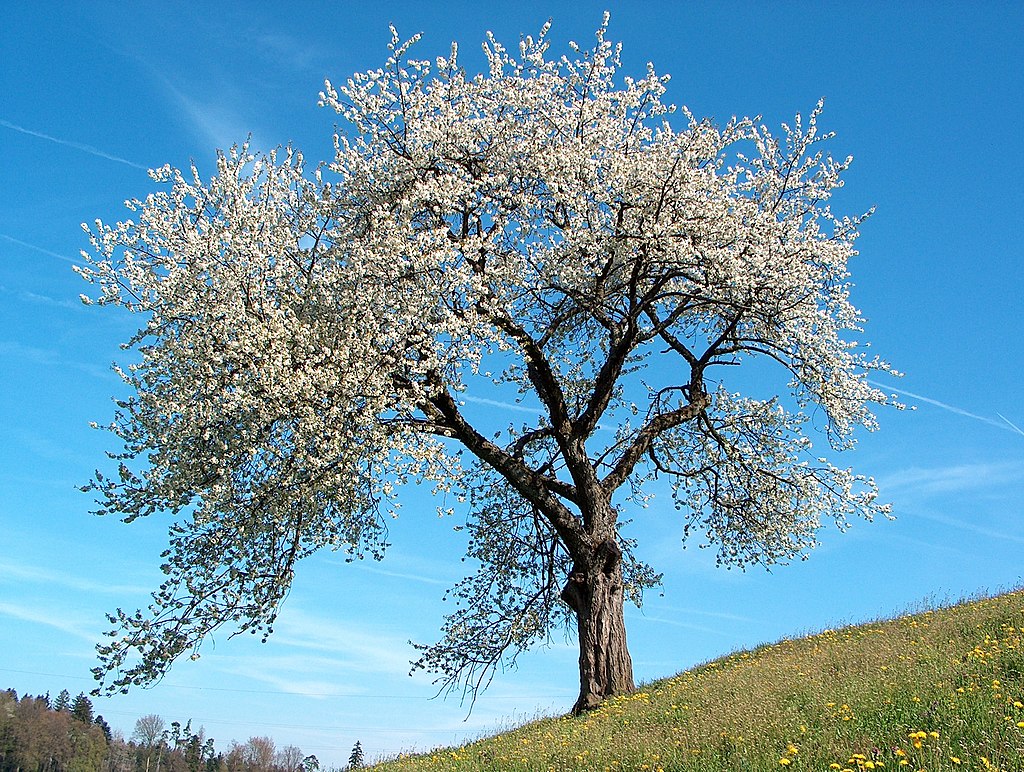
This deciduous small tree is a member of the rose family, Rosaceae, that also includes almond, lady’s mantle, meadowsweet. It is probably the result of spontaneous hybridization between ground cherry (P. fruticosa) and sweet cherry (P. avium) in southeastern Europe and southwestern Asia where the range of the two species overlap. The ancient naturalist, Pliny the Elder (died 79 AD), writes that the sour cherry was brought to Europe by Lucullus from the ancient town of Cerasus, probably modern Kheresoun, on the coast of Asia Minor, and west of Trebizond. Carbonized remains of Prunus cerasus was found in the soil of the area around ancient Pompeii. Photo Credit Franz Eugen Köhler Wikipedia

The tree grows up to 30′ tall and has a broadly rounded crown, red to gray-brown bark with prominent horizontal lenticels, and twiggy branches. The alternate leaves are 2-5″ long, ovate to elliptic, and have serrated margins and, sometimes, 2 glands at the base. From mid spring to late spring, clusters of 2-3 white flowers appear. Each flower is cup-shaped, has 5 petals, and is 1-3″ across. The 1-seeded round fruits are 1″ across, sour, and red to burgundy when ripe. Photo Credit Benjamin Gimmel Wikipedia
Size: 30′
Light: Full sun
Soil: Fertile, medium moist, well-drained
USDA Hardiness Zones: 3-8